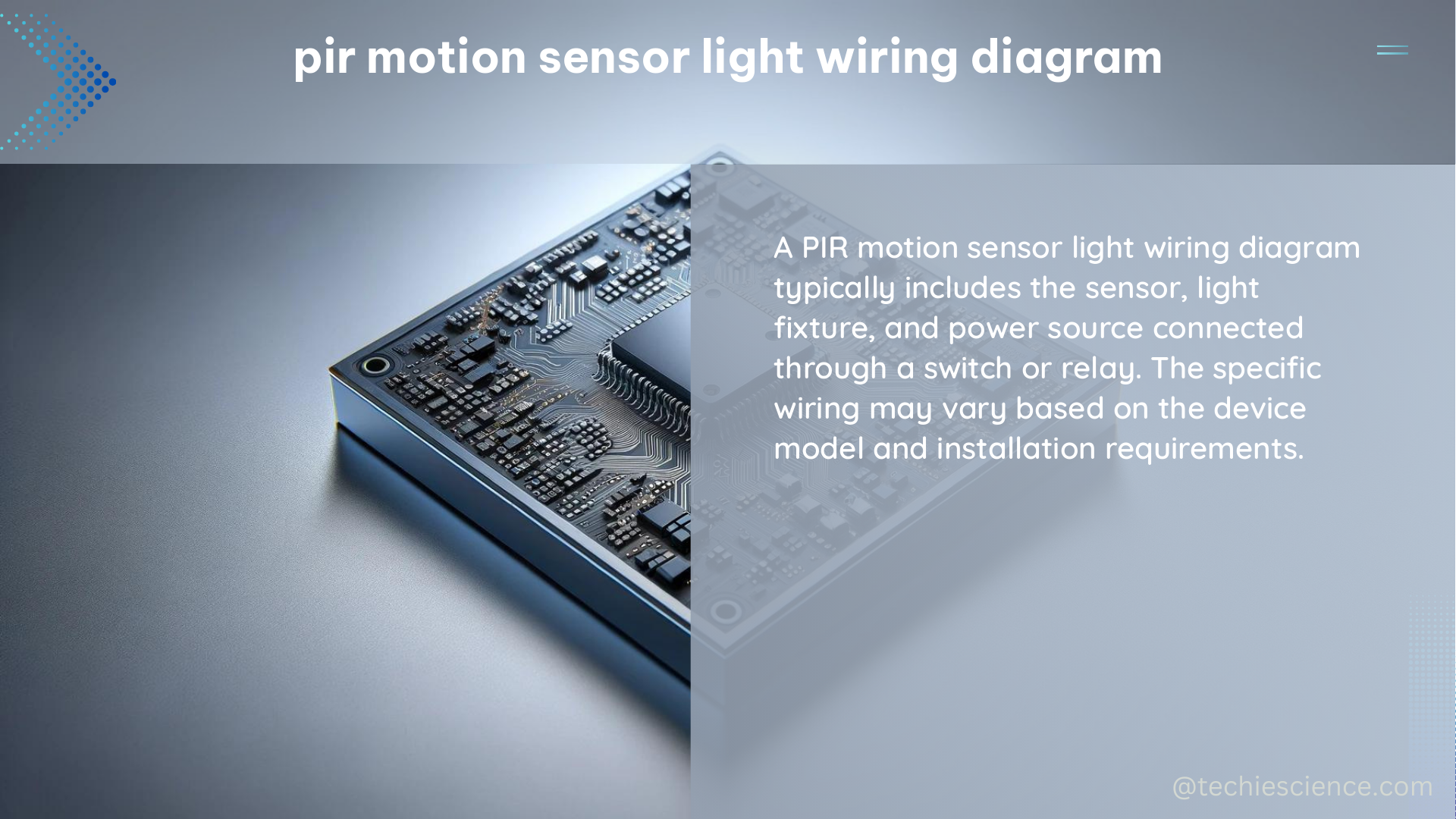The PIR (Passive Infrared) motion sensor light wiring diagram is a crucial component in creating a motion-activated lighting system. By connecting a PIR sensor, a 5V relay, and a 5V wall adapter, you can build a circuit that automatically turns on a light when motion is detected. This guide will provide you with a detailed understanding of the technical specifications, design considerations, and step-by-step instructions for creating a DIY PIR motion sensor light wiring diagram.
Technical Specifications
The technical specifications for a PIR motion sensor light wiring diagram can vary depending on the specific components used. However, some general specifications include:
| Specification | Value |
|---|---|
| PIR Sensor Voltage | 5V |
| Relay Voltage | 5V |
| Wall Adapter Voltage | 5V |
| Maximum Current Draw | Depends on the light bulb used |
| Wiring | Two-conductor wire for power and signal connections |
The PIR sensor operates on a 5V power supply and generates a signal when it detects motion. The 5V relay acts as a switch, allowing the circuit to be powered by the 5V wall adapter and controlled by the PIR sensor. The maximum current draw will depend on the specific light bulb used in the circuit, so it’s essential to ensure that the power supply can provide enough current to power the relay and the light bulb.
Design Considerations

When designing a PIR motion sensor light wiring diagram, there are several factors to consider:
Power Supply
Ensure that the power supply can provide enough current to power the relay and the light bulb. The 5V wall adapter should have a sufficient current rating to handle the combined load of the relay and the light bulb.
Relay Type
Choose a relay with a suitable contact rating for the light bulb. The relay should be able to handle the current and voltage requirements of the light bulb to ensure reliable operation.
PIR Sensor Placement
The placement of the PIR sensor is crucial for effective motion detection. Position the sensor in a location where it can detect motion effectively, considering factors such as the sensor’s field of view, sensitivity, and potential obstructions.
Wiring
Use appropriate wire gauge and connectors to ensure a reliable connection. The two-conductor wire should be of sufficient size to handle the current draw of the circuit and be properly insulated to prevent short circuits or electrical hazards.
Safety Precautions
When working with electrical circuits, it’s essential to consider safety precautions. This includes using insulated wires, avoiding exposed connections, and ensuring that the circuit is properly grounded.
DIY PIR Motion Sensor Light Wiring Diagram
To create a DIY PIR motion sensor light wiring diagram, you will need the following components:
- PIR sensor
- 5V relay
- 5V wall adapter
- Two-conductor wire
- Light bulb and socket
- Breadboard and jumper wires (for prototyping)
The wiring diagram for a PIR motion sensor light can be created using a breadboard and jumper wires for prototyping. The general steps are as follows:
- Connect the PIR sensor’s power and ground pins to the 5V power supply and ground, respectively.
- Connect the PIR sensor’s signal output pin to the signal input of the 5V relay.
- Connect the relay’s common and normally open contacts to the light bulb and the 5V power supply.
- Ensure that all connections are secure and properly insulated.
Here’s a sample wiring diagram for a DIY PIR motion sensor light:
+-----+
| |
| PIR |
| Sensor
| |
+-----+
|
|
+-----+
| |
| 5V |
| Relay
| |
+-----+
|
|
+-----+
| |
| 5V |
| Wall
| Adapter
| |
+-----+
|
|
+-----+
| |
| Light|
| Bulb |
| |
+-----+
By following this wiring diagram, you can create a motion-activated light circuit using a PIR sensor, a 5V relay, and a 5V wall adapter.
Reference
- Instructables: PIR Sensor with LED for Beginners
- Adafruit Forums: Diagram of the PIR motion sensor?
- Home Assistant Community: Motion sensor integrated light wiring diagram

The lambdageeks.com Core SME Team is a group of experienced subject matter experts from diverse scientific and technical fields including Physics, Chemistry, Technology,Electronics & Electrical Engineering, Automotive, Mechanical Engineering. Our team collaborates to create high-quality, well-researched articles on a wide range of science and technology topics for the lambdageeks.com website.
All Our Senior SME are having more than 7 Years of experience in the respective fields . They are either Working Industry Professionals or assocaited With different Universities. Refer Our Authors Page to get to know About our Core SMEs.